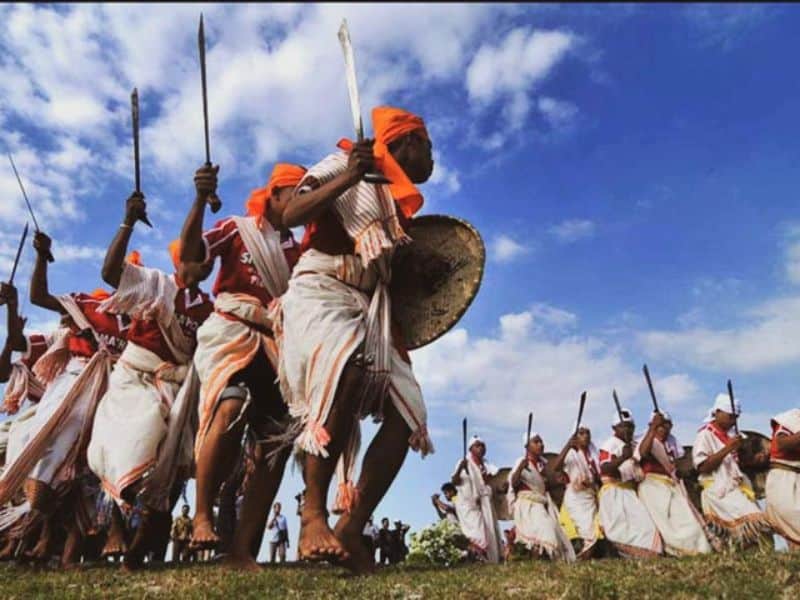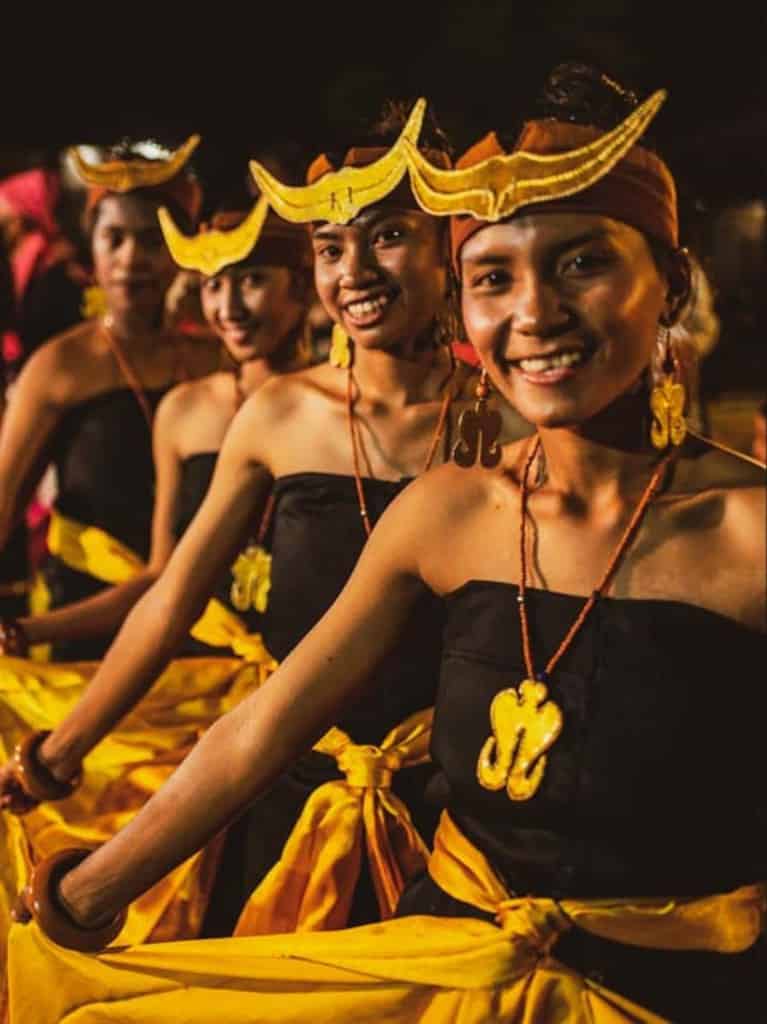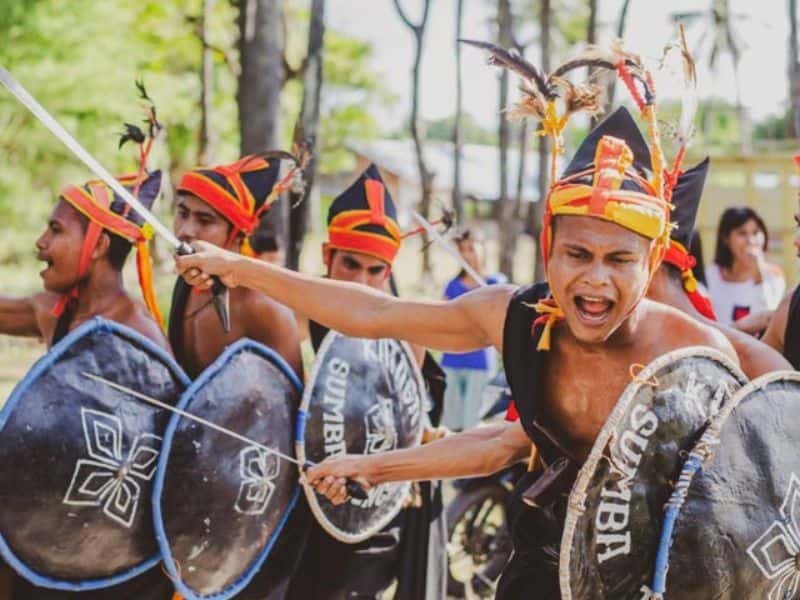NTT Kataga Dance is a traditional dance from Indonesia, specifically originating from the Minahasa area, North Sulawesi.
This dance has elements that are thick with the culture and traditions of the Minahasa people. Its origins can be traced in the daily life of the Minahasa people who depend on nature as their source of life.
Kataga Dance is usually performed in a series of traditional ceremonies or other important events, such as holiday celebrations or cultural festivals. The movements in this dance often depict daily activities, such as planting, harvesting, or other activities related to village life.
What is Kataga dance, NTT?
NTT Kataga Dance is a type of traditional dance originating from the Minahasa area, North Sulawesi, Indonesia. This dance depicts the daily life and culture of the Minahasa people with dynamic and distinctive movements.
Usually, the Kataga Dance is performed at various traditional events, ceremonies or cultural festivals as part of a celebration or welcome. Movements in Kataga Dance often depict activities such as planting rice, harvesting crops, or other activities related to rural life.
This dance is not just entertainment, but has deep symbolic values for the Minahasan people. Apart from dynamic movements, the NTT Kataga dance is also known for the traditional costumes used by the dancers, and is accompanied by traditional music such as Kolintang from the Minahasa area.
Overall, Kataga Dance is an important part of Indonesia's cultural heritage, especially from North Sulawesi. In fact, it is one way to maintain and respect the traditions and culture of the Minahasa people.
Also read later:
- Types of Balinese Dance | 15 Balinese Artistic Dances
- List of 8 Most Famous Indonesian Traditional Clothing
- Hidden Gem NTT Tourism 8 Destinations You Must Visit
Typical Sumbanese Dance Movements and Techniques
The NTT Kataga Dance has distinctive movements and techniques, depicting daily life and the cultural beauty of the Minahasa people. The following are several movements and techniques that are generally found in Kataga Dance.

1. Dynamic Movement
Kataga dance often displays dynamic and energetic movements. These movements depict daily activities such as planting, harvesting, or communicating between dancers.
2. Hand and Foot Movements
Travela, Hand and foot movements in Kataga Dance usually involve subtle and elegant gestures. Hand movements can symbolize activities such as planting, harvesting, or interacting with the natural environment, while foot movements emphasize rhythm and strength.
3. Body Posture
Travela, the dancer's body posture in Kataga NTT dance is important to strengthen the expression of movements. An upright posture with an open body and steady steps are the characteristics of this dance.
4. Facial Expressions
The dancer's facial expressions have an important role in the NTT Kataga dance. A cheerful and enthusiastic face reflects the joy and abundant life in Minahasa society.
5. Good group coordination
The Kataga dance is often performed by a group of dancers who must have good coordination. Coordination between dancers in movements and dance steps is the key to creating a harmonious and charming performance.
6. Use of Property
Several types of NTT Kataga dance also involve the use of props such as traditional agricultural tools or other items that depict rural life.
Apart from the typical movements and techniques, it is important to remember that each Kataga Dance Performance has different variations and interpretations, depending on the region of origin and the creativity of the dancers.
What is Makeup and Clothing in Kataga Dance?
The make-up and clothing in the NTT Kataga dance reflects the beauty of the culture and traditions of the Minahasa people. The following is a general description of the make-up and clothing used in the Kataga Traditional Dance.

- Traditional Clothing: The Kataga Dancers wear traditional Minahasan clothing. Men wear traditional clothing in the form of t-shirts, trousers and a shawl around their waist. While women wear kebaya with long cloth or traditional batik which is shaped according to regional styles and customs.
- Accessories: Accessories such as headdresses, necklaces, bracelets and earrings are used to add a graceful and unique impression to the dancer's appearance. These accessories have deep symbolic and cultural value for the Minahasa people.
- Cosmetic: The make-up for the Kataga Dance generally emphasizes the natural and simple side. In general, dancers' makeup emphasizes parts of the face, such as thickened eyebrows, natural red lips, and a little use of makeup to disguise blemishes on the face.
- Hand and Foot Decoration: Kataga Dancers also use hand and foot decorations in the form of bracelets, rings or small bells which add beauty to the movements of the hands and feet during the performance.
- Natural Colors: The colors used in NTT Kataga dance clothing and make-up are inspired by nature, such as green, brown, red and yellow. These colors reflect the natural richness and beauty of the atmosphere in the Minahasa area.
It is important to note that the make-up and clothing in the NTT Kataga dance can vary depending on the dance version, region of origin, creativity of the fashion and make-up designers.
However, harmony between clothing, make-up and movements in the NTT Kataga dance performance is one of the important things that adds to the charm and beauty of the dance.
Kataga Dance Function
Kataga dance has various important functions in the context of Minahasan culture and society, as well as on a wider scale in Indonesian culture. Following are some of the main functions of the Kataga Dance.
- Cultural Preservation: One of the main functions of the Kataga Dance is as a tool to preserve the culture and traditions of the Minahasa people. Through this dance. The younger generation can learn and understand the values, beliefs and daily lives of their ancestors.
- Cultural Expression and Identity: Kataga dance is an expression of the cultural identity of the Minahasa people. By maintaining and presenting this dance. They express their identity and pride in their culture and ancestral heritage.
- Cultural entertainment: Kataga dance is performed at various traditional events, festivals or celebrations. Its function is as entertainment to create a festive atmosphere, enriching social and cultural experiences for the audience.
- Education and Education: Kataga dance can be used as an educational and learning tool, both in the school environment and in the community. Through this dance, Travela can learn about history, traditions and cultural values Minahasa tribe.
- Tourism Promotion: Traditional dances such as the NTT Kataga dance have the potential to become a tourism attraction. This dance performance can enrich the experience of tourists visiting the Minahasa area, as well as introduce the richness of Indonesian culture to the world.
- Strengthening Local Culture: By maintaining and continuing to develop the Kataga Dance, the Minahasan people can strengthen their own local culture.
Let's read other interesting information:
This gives them strength in maintaining cultural integrity amidst the current globalization and modernization.
Overall, Kataga Dance has an important role in strengthening cultural identity, presenting ancestral heritage. This dance also creates a deep connection between the current generation and the past and future of Minahasan society.
Isn't it very interesting that one of the cultural heritages of the archipelago, especially NTT's Kataga dance? Travela can see their cool performance live, let's go on holiday to Sumba!



